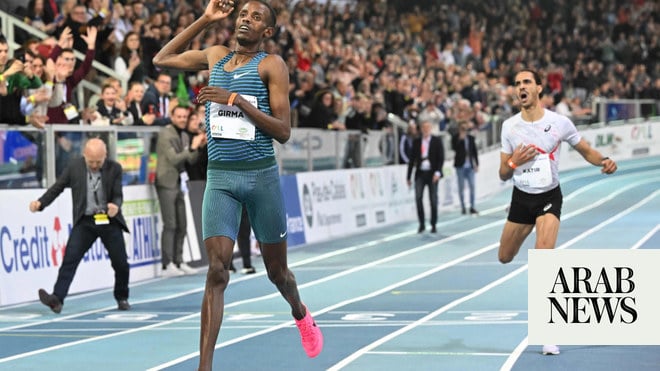
The extraordinary spate of athletics world records in the super spikes era continued on Tuesday as Letesenbet Gidey smashed the two-day-old women’s 10,000m best, set by Sifan Hassan on Sunday, by more than five seconds.
It was the latest in a long line of staggering performances in the game-changing technology, which is reckoned to improve performance by between half a second and a second a lap.
Gidey, who was running on the same Hengelo track where Hassan set her world record, always looked confident. For much of the race - which doubled as the Ethiopian trials - she churned out 72-second laps before powering home in a final lap of 63 seconds, despite having to weave between other runners, to finish in 29:01.03.
“I expected to run a world record,” said the 23-year-old, who is the first woman to hold both the 5,000m and 10,000m world records since Ingrid Kristiansen from 1986-1993. “I’d like to try to break the world record again and break 29 minutes.”
To put Gidey’s time into context, between 1993 and 2016 no one ran within 20 seconds of the world record of 29:31 held by the Chinese athlete Wang Junxia, who was part of “Ma’s Army (link)” and was revealed by Chinese state media in 2016 as being part of a state-sponsored doping regime. And some eyebrows were also raised when the Ethiopian Almaz Ayana finally broke Wang’s record by running 29:17.45 in Rio in 2016 and said that “my doping is Jesus”.
Yet, in the space of barely 48 hours, the 10,000m world record has fallen again by another 16 seconds because of the effect of the new spikes.
After a number of world records were broken on the road, World Athletics (link) introduced new rules in 2019, including limiting the use of plates and restricting the sole of track spikes to no thicker than 30mm. But rather than stem the tide they have opened the floodgates.
In the last 10 months alone the men’s and women’s 5,000m and 10,000m track records have all fallen, along with the men’s and women’s 5km, 10km and half marathon distances on the road.












